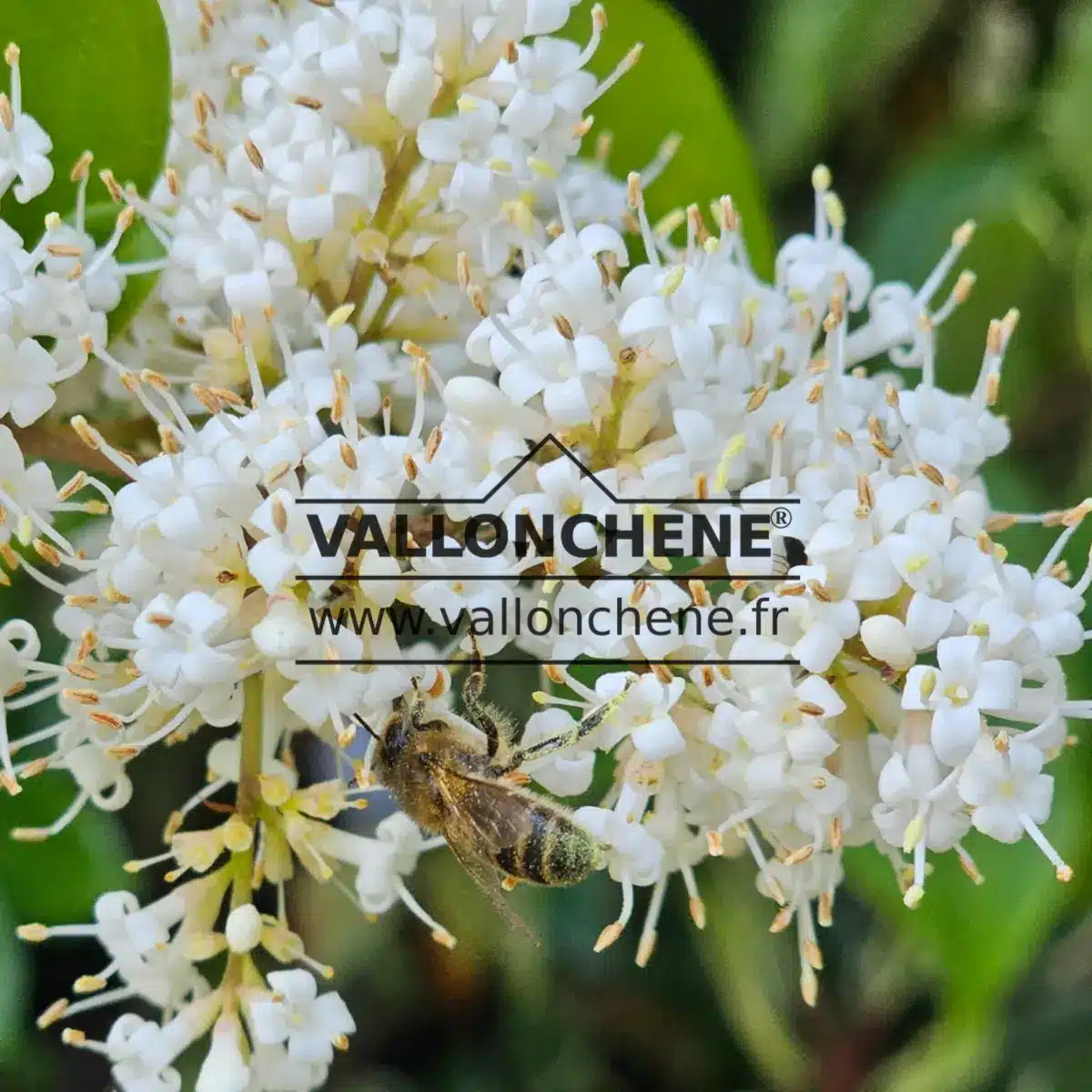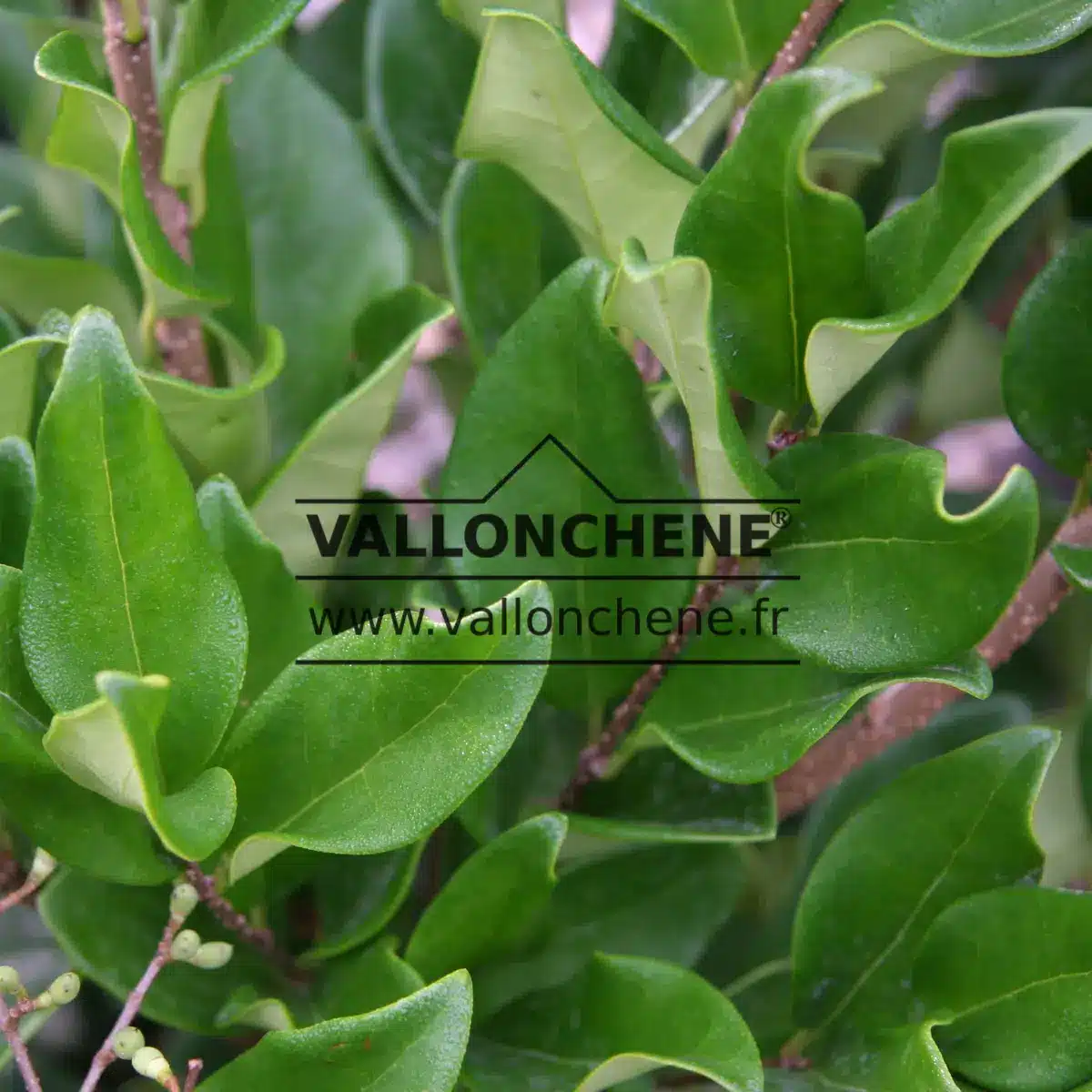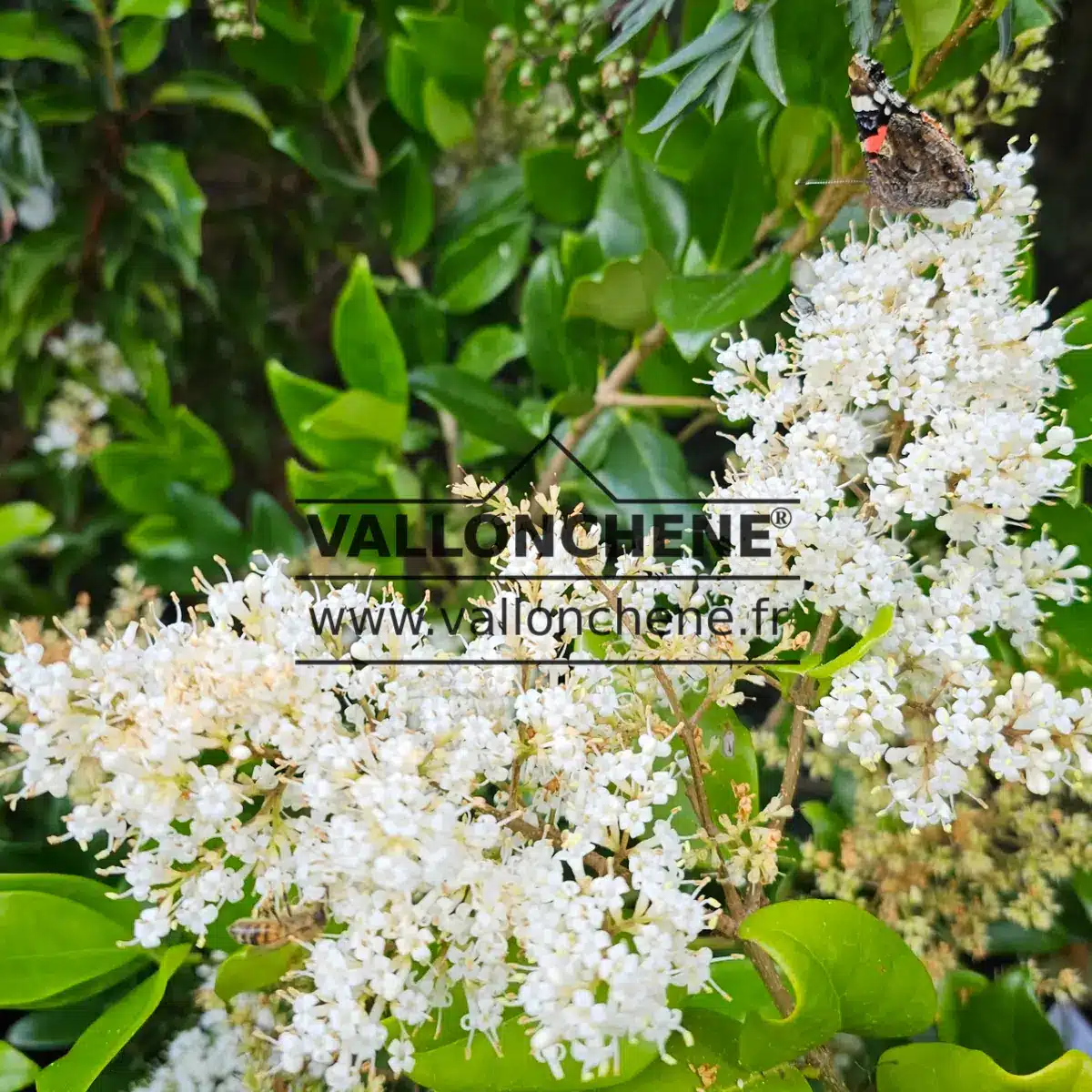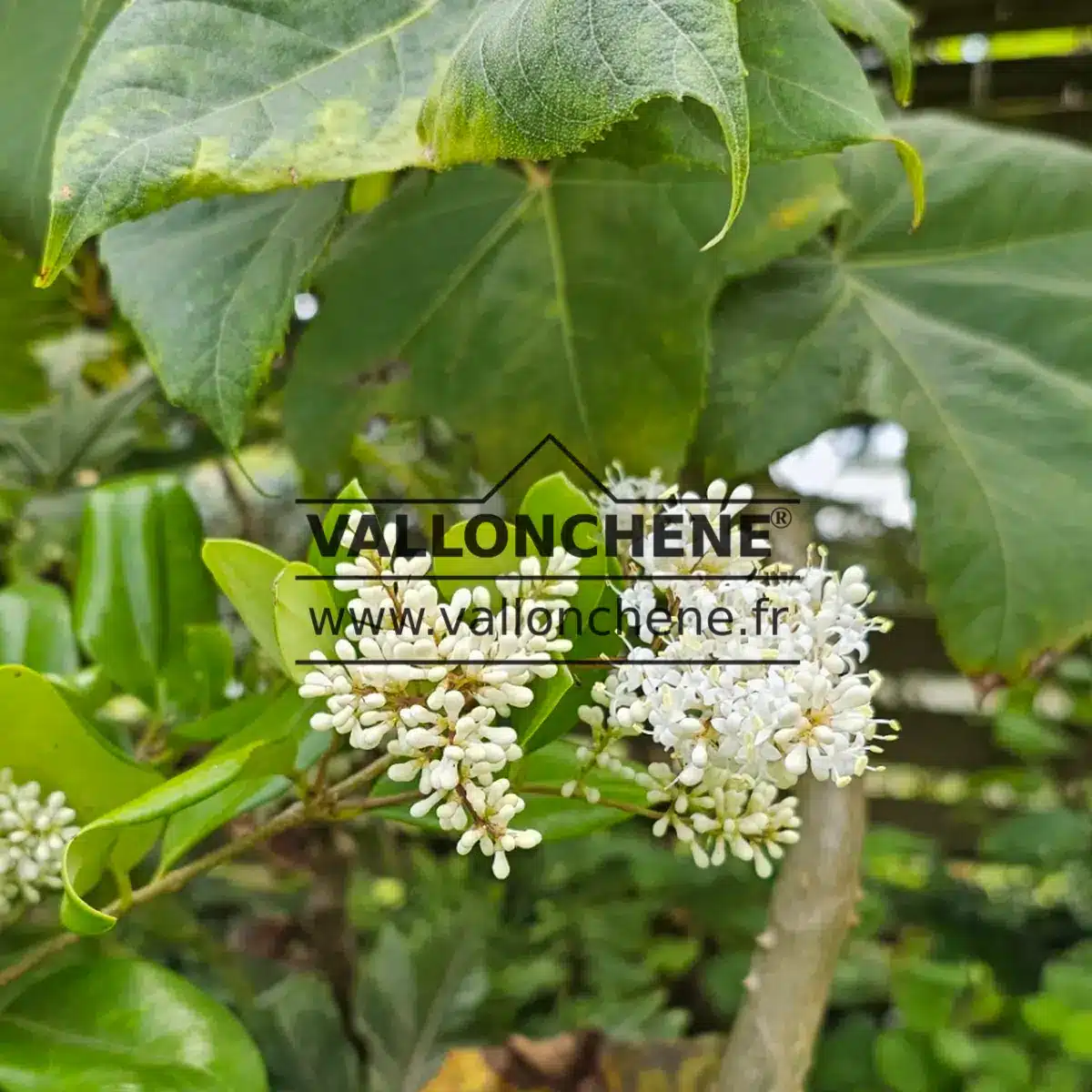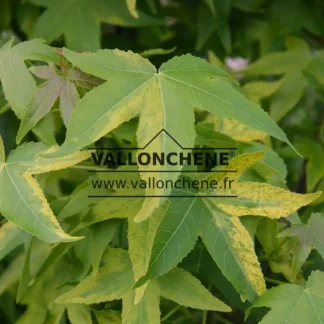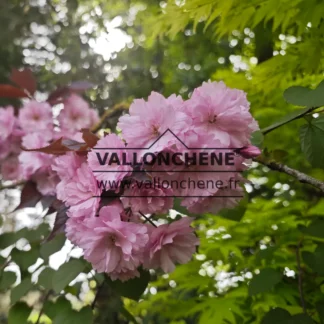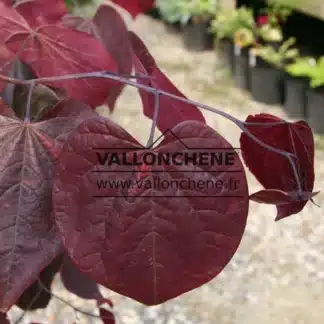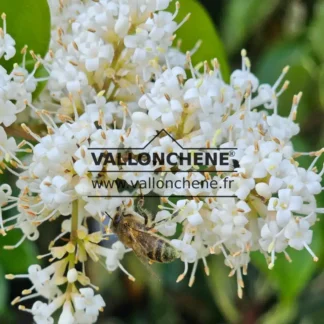Description
LIGUSTRUM japonicum ‘Texanum’, also called Japanese privet, develops magnificent shiny and slightly wavy leaves. They are thicker than those of other Japanese privet. Occasionally, we can read that this Japanese privet is semi-evergreen. However, it has been evergreen in our nursery. Likewise, this variety is just as resistant to cold and drought as other privet.
In summer, its large white flowers appear in large numbers to perfume the garden. They are very popular with butterflies and bees. In addition, birds love the berries that follow. This shrub will not exceed 2.5 to 3 meters and grows quite compactly.
How to plant LIGUSTRUM japonicum ‘Texanum’
Find a place in partial shade or full sun. You can plant it in a pot, in a bed or even in a hedge.
Undemanding, this Japanese privet accepts light, normal or heavy soil and is satisfied with any pH. The ground can be dry, slightly damp, or wet. Nevertheless, make sure it is watered well the first two years.
For a good preparation of the pot or ground, we have designed specific instructions available here. Furthermore, discover here how to water your garden and save water.
History and origin
LIGUSTRUM japonicum ‘Texanum’ was created in 1954 in Texas from a LIGUSTRUM japonicum.
The type species, LIGUSTRUM japonicum, is endemic to central and southern Japan. It is also cultivated in other regions. In addition, it is naturalized in California and the southeastern United States, from Texas to Virginia.
The Japanese privet arrived in North America in 1845 from Japan and Korea.
In Europe, it is used as an ornamental plant. The famous Carl Peter Thunberg described it for the first time in 1780.
Finally, the Japanese also use this species for the art of Bonsai.

